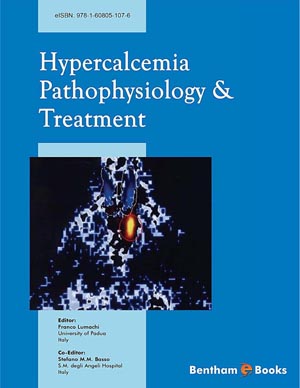Abstract
Primary hyperparathyroidism (HPT) is the most common cause of hypercalcemia in nonhospitalized patients. Benign sporadic primary HPT is caused by a solitary adenoma in 80-85%, by multiglandular disease (multiple adenoma, parathyroid hyperplasia) in 12-14%, and parathyroid carcinoma in 1-2% of the cases. Parathyroid carcinoma is an uncommon finding, and its etiology remains unclear. Primary HPT can also occur in familial syndromes, such as multiple endocrine neoplasia type 1 (MEN 1), MEN 2A, hyperparathyroidism-jaw tumor (HPT-JT) syndrome, and familial isolated primary HPT, which seems to be an early stage of MEN 1 or HPT-JT. Most of the patients with primary HPT are diagnosed because of asymptomatic hypercalcemia, and both signs and symptoms of the disease, when present, are nonspecific, mainly depending on serum calcium concentration. Some patients, however, are diagnosed because of having osteopenia, osteoporosis, or unjustified recurrent bilateral nephrolithiasis. Primary HPT can be discovered by a simultaneous increase of both serum calcium and parathyroid hormone (PTH) levels, and thus the diagnosis can be obtained by inclusion rather than by excluding all the other causes of hypercalcemia. Indeed, the PTH measurement represents the keystone for differential diagnosis between primary HPT and malignancy-associated hypercalcemia. Other benign causes of hypercalcemia are drug-induced (vitamins A & D intoxication, thiazides, lithium, estrogens), endocrine (thyrotoxicosis), posttransplant and tertiary HPT, and familial benign hypocalciuric hypercalcemia. Virtually, all symptomatic patients with confirmed primary HPT should be referred for surgery, while more restrictive criteria have been suggested for the management of those with asymptomatic HPT.





















